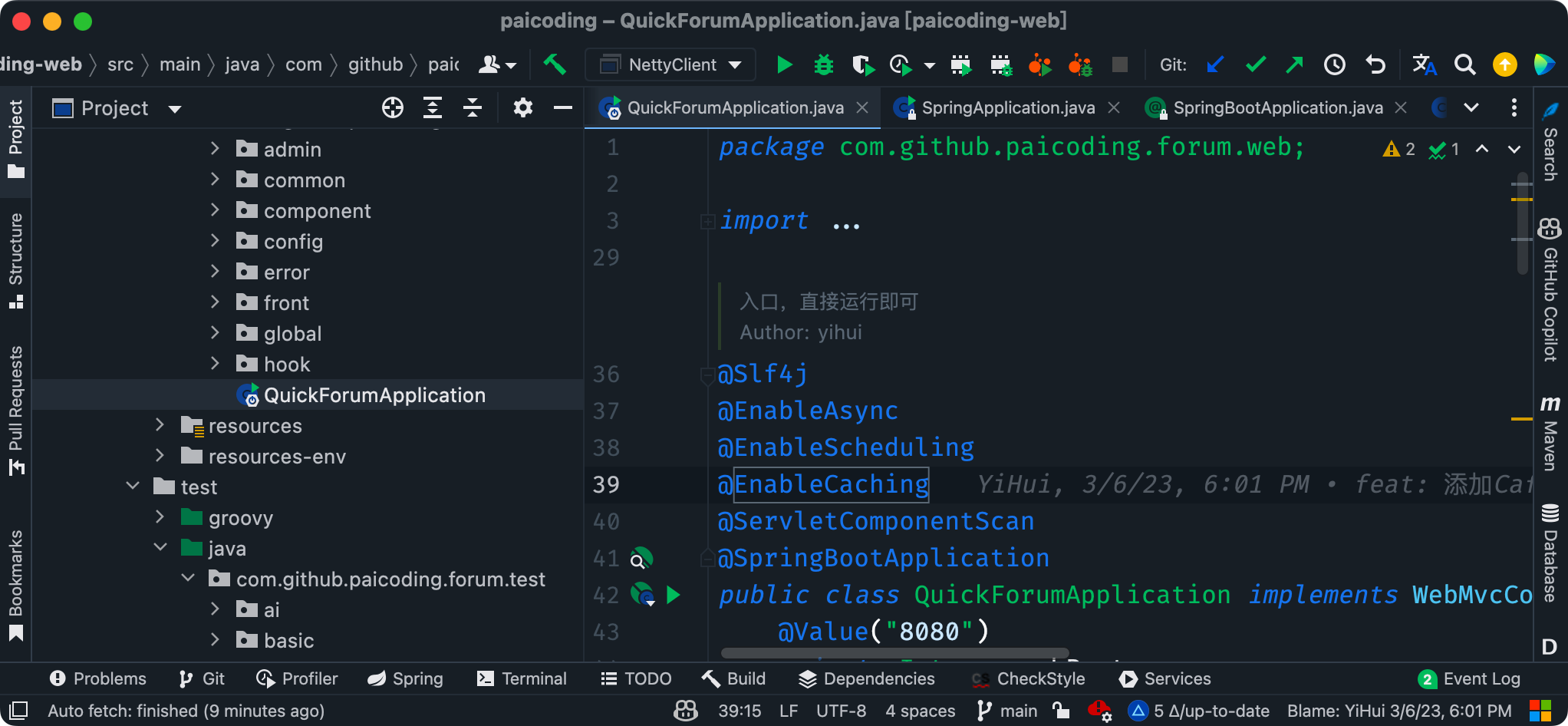目录
一、问题描述
二、解答
方法一:穷举法(只列举了一部分)
方法二:中缀表达式直接求值,两个栈,一个存放数值,一个存放符号
方法三:将中缀表达式转换为后缀来计算注意:
三、总结
一、问题描述

二、解答
方法一:穷举法(只列举了一部分)
即将所有的情况列举出来,共4*4*4=64种情况,但是我实在列不下去了,就只列举了12种。
建造了一个结构体,里面存放输入的字符串;使用两个vector容器,分别存放数字和符号;另外还弄了一个字符串数组,来存放每行结果yes或no。
注意:string不需要显式初始化,且字符串应该使用双引号。
代码(没有写完):
#include<iostream>
#include<string>
#include<vector>
using namespace std;
struct Data {
string s;
}str[100];
int main()
{
int n;
cin >> n;
//string str[100];
for (int i = 0; i <n; i++)
{
//string s;
cin >> str[i].s;
}
vector<int>a;
int m=0;
vector<char>b;
//string stri[100] = { NULL };
string stri[100];//string不需要显式初始化
for (int i = 0; i < n; i++)
{
a.clear();//先对vector容器进行清空
b.clear();
int sum = 0;
for (int j = 0; j <= 6; j++)//字符串一共7个,所以j是小于等于6或者小于7,别再犯低级错误了!!!
{
if (j % 2 == 0)
{
m = str[i].s[j] - '0';
a.push_back(m);
}
else {
b.push_back(str[i].s[j]);
}
}
//共4*4*4=64种情况,实在列不下去了,就列举了12种
if (b[0] == '+' && b[1] == '+' && b[2] == '+') {
sum = a[0] + a[1] + a[2] + a[3];
}
if (b[0] == '+' && b[1] == '+' && b[2] == '-') {
sum = a[0] + a[1] + a[2] -a[3];
}
if (b[0] == '+' && b[1] == '+' && b[2] == 'x') {
sum = a[0] + a[1] + a[2] *a[3];
}
if (b[0] == '+' && b[1] == '+' && b[2] == '/') {
sum = a[0] + a[1] + a[2] / a[3];
}
if (b[0] == '+' && b[1] == '-' && b[2] == '+') {
sum = a[0] + a[1] - a[2] + a[3];
}
if (b[0] == '+' && b[1] == '-' && b[2] == '-') {
sum = a[0] + a[1] - a[2] - a[3];
}
if (b[0] == '+' && b[1] == '-' && b[2] == 'x') {
sum = a[0] + a[1] - a[2] * a[3];
}
if (b[0] == '+' && b[1] == '-' && b[2] == '/') {
sum = a[0] + a[1] - a[2] / a[3];
}
if (b[0] == '+' && b[1] == 'x' && b[2] == '+') {
sum = a[0] + a[1] * a[2] + a[3];
}
if (b[0] == '+' && b[1] == 'x' && b[2] == '-') {
sum = a[0] + a[1] * a[2] - a[3];
}
if (b[0] == '+' && b[1] == 'x' && b[2] == 'x') {
sum = a[0] + a[1] * a[2] * a[3];
}
if (b[0] == '+' && b[1] == 'x' && b[2] == '/') {
sum = a[0] + a[1] * a[2] / a[3];
}
if (sum == 24)
{
//stri[i] = 'Yes';
stri[i] = "Yes";
}
else {
//stri[i] = 'No';
stri[i] = "No";
}
}
for (int i = 0; i < n; i++) {
cout << stri[i] << endl;
}
return 0;
}方法二:中缀表达式直接求值,两个栈,一个存放数值,一个存放符号
思路可以参考之前写过的博客:栈的应用之表达式求值(前缀、中缀、后缀)-CSDN博客
注意:
①循环条件:栈外元素比栈顶元素优先级小或相等+栈不为空,两个条件才能继续循环
②关于报错:back() called on empty deque:应该先检查栈是否为空,再写其他条件。
✘while (pri(s[j]) <= pri(top)||optr.empty()==true)
循环条件是:栈外元素比栈顶元素优先级小或相等+栈不为空,两个条件才能继续循环,所以不应该是||,而是&&。
✘while (pri(s[j]) <= pri(optr.top())&&!optr.empty())
后判空,也是错误的。应该先判空!!!
✔while (!optr.empty()&&pri(s[j]) <= pri(optr.top()))
③这里栈不清空不影响,因为只要是看运算符的栈,每次循环结束后,这个栈都是空的。
代码:
#include<iostream>
#include<stack>
using namespace std;
int pri(char op) {//设置优先级
if (op == 'x' || op == '/') {
return 2;
}
else if (op == '+' || op == '-') {
return 1;
}
}
int comp(char op, int x, int y) {//计算
switch (op)
{
case '+':return x + y; break;
case '-':return x - y; break;
case 'x':return x * y; break;
case '/':return x / y; break;
default:break;
}
}
int main()
{
int n;
cin >> n;
string s;
stack<int>opnd;//存放数字
stack<char>optr;//存放符号
string str[100];//存放结果
for (int i = 0; i < n; i++)
{
cin >> s;
int res = 0;
for (int j = 0; j <7; j++)
{
if (s[j] > '0' && s[j] <= '9')
{
opnd.push(s[j] - '0');
}
else {
if(optr.empty())//栈为空
{
optr.push(s[j]);
}
else {
if (pri(s[j]) > pri(optr.top())) {
optr.push(s[j]);
}
else {
//while (pri(s[j]) <= pri(top)||optr.empty()==true)
//栈外元素比栈顶元素优先级小或相等+栈不为空,两个条件才继续循环
//while (pri(s[j]) <= pri(optr.top())&&!optr.empty())
// 后判空,也是错误的。应该先判空!!!
while (!optr.empty()&&pri(s[j]) <= pri(optr.top()))
{
int p = opnd.top();
opnd.pop();
int q = opnd.top();
opnd.pop();
//注意这里是:次栈顶元素加减乘除栈顶元素!!!
int result = comp(optr.top(), q, p);
opnd.push(result);
optr.pop();
}
optr.push(s[j]);
}
}
}
}
//遍历结束后
while (!optr.empty())
{
char top = optr.top();
int p = opnd.top();
opnd.pop();
int q = opnd.top();
opnd.pop();
res= comp(top, q, p);
opnd.push(res);
optr.pop();
}
if (res == 24) {
str[i] = "Yes";
}
else {
str[i] = "No";
}
}
for (int i = 0; i < n; i++) {
cout << str[i] << endl;
}
return 0;
}方法三:将中缀表达式转换为后缀来计算
注意:
①在使用STL容器涉及循环时,最好应该在每一次循环开始前清空,否则影响下一次循环。
②使用到的两个栈的数据类型是不一样的,注意字符和数字之间的转换。
思路:可参考之前写过的博客栈的应用之表达式求值(前缀、中缀、后缀)-CSDN博客
代码:
#include<iostream>
#include<stack>
#include<vector>
using namespace std;
int pri(char op) {//设置优先级
if (op == 'x' || op == '/') {
return 2;
}
else if (op == '+' || op == '-') {
return 1;
}
}
int comp(char op, int x, int y) {//计算
switch (op)
{
case '+':return x + y; break;
case '-':return x - y; break;
case 'x':return x * y; break;
case '/':return x / y; break;
default:break;
}
}
int main()
{
int n;
cin >> n;
string s;
stack<char>st1;//用来将中缀转换为后缀,存放符号
stack<int>st2;//用来对后缀求值,存放数字,为int型
vector<char>v;//用来存放后缀表达式
string str[100];//存放结果
for (int i = 0; i < n; i++) {
cin >> s;
int result = 0;
//将中缀转换为后缀
for (int j = 0; j < 7; j++)
{
if (s[j] > '0' && s[j] <= '9') {
v.push_back(s[j]);
}
else {
if (st1.empty()) {
st1.push(s[j]);
}
else {
if (pri(s[j]) > pri(st1.top())) {
st1.push(s[j]);
}
else {
while (!st1.empty() && (pri(s[j]) <= pri(st1.top())))
{
v.push_back(st1.top());
st1.pop();
}
st1.push(s[j]);
}
}
}
}
//遍历结束后
while (!st1.empty()) {
v.push_back(st1.top());
st1.pop();
}
//对后缀求值
for (vector<char>::iterator it = v.begin(); it != v.end(); it++)
{
if (*it > '0' && *it <= '9')
{
int m = *it - '0';
st2.push(m);
}
else {
int p = st2.top() ;
st2.pop();
int q = st2.top();
st2.pop();
result = comp(*it, q, p);
//char c = result + '0';
st2.push(result);//注意这里要加‘0’
}
}
if (result == 24) {
str[i] = "Yes";
}
else {
str[i] = "No";
}
while(!st2.empty())
{
st2.pop();
}
v.clear();
}
for (int i = 0; i < n; i++) {
cout << str[i] << endl;
}
return 0;
}三、总结
这应该是我写的最长时间的题目了,其实从上周二就开始写这道题,关键第一次看这题的时候,还觉得它很简单,以为不就是算术运算吗。真是啪啪打脸。根本原因还是自己忘了之前学过的栈的应用之表达式求值,它是做本题的最好方法。这次,又把它重新学了一下,感觉有了更深刻的体会和新的认识。








![[Linux]:进程间通信(上)](https://img-blog.csdnimg.cn/img_convert/4b490c74ae8c0ac138bc1ea1891980cb.png)
![[通信原理]绪论1:信号 × 通信系统](https://i-blog.csdnimg.cn/direct/22952c0f817148e0913daa6dbbe14b9c.png)








